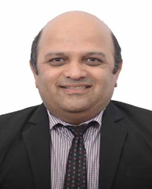PI Name & Affiliation:
Dr. Ramesh Thamankar
Associate Professor
Centre for Functional Materials
Co-PI Name & Affiliation:
Dr. Ramakrishnan Ganesan
Professor
Department of Chemistry, BITS PILANI,
Hyderabad Capus
Funding Agency: Science and Engineering Research Board (SERB)
Scheme: Core Research Grant (CRG)
Sanctioned Amount: Rs. 33,31,130
Duration of the Project: 3 Years

Dr. Ramesh Thamankar

Dr. Ramakrishnan Ganesan
Graphical Abstract

Project Description
Computation beyond von Neumann architecture is becoming more and more attractive in the era of big data and internet of things. Brain inspired architecture is a way forward to achieve highly efficient, low power consuming computing systems. This can be done by means of in-sensor computing, spiking neural network (SNN) and Artificial Intelligence (AI). Conventional von Neuman computing systems have the processor and memory in different physical locations limiting the processing speed, particularly when dealing with big data which consumes lot of power and also limited by the data transfer between the memory and processor (the von Neumann bottleneck) thus limiting the computing capability of these platforms. In order to process such big data, the existing hardware architecture following Moore’s law poses serious challenges in embedding more and more memory and processors in a given area or volume. In this sense, computing architectures designed with new ideas and new materials are very much essential for highly efficient systems consuming lesser power.
Our brain does this in a smart way by distributing the work into different places of the brain. It is well established that Neuron - Synapse form the fundamental pair in the brain-inspired computation. Memristors or Resistive switching memory devices are one of the device architectures which can store information in the form of different resistance states. We will fabricate the memristive 2-terminal devices using CaF2/MoS2 nanocomposites. The fundamental operation of neuron-synapse-neuron will checked with these artificial synaptic devices. Extension of single device measurements for multiple devices will be done to mimic the operation of human organs such as eye. The devices will also be tested for sensing various biologically relevant molecules.
Products/ Instruments/ Results/ Outreach Activities
